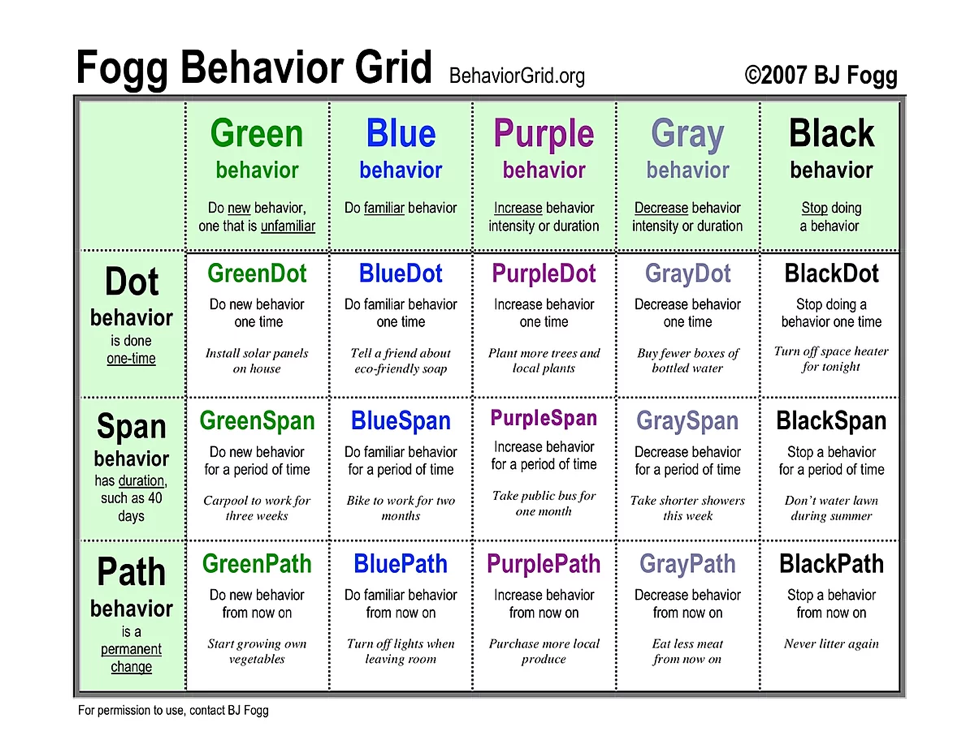Fogg Behavior Grid
The Fogg Behavior Grid
We find that people sometimes need a little help navigating the Behavior Grid at first. If you want help determining your target behavior type, use the Behavior Wizard to guide you through the process.
Behavior Grid Paper: The Behavior Grid: 35 Ways Behavior Can Change (2009)
This is BJ Fogg’s 2009 paper about the Fogg Behavior Grid. Note that the 2009 paper outlined 35 behaviors types, but this approach had weaknesses. The newer grid with 15 behavior types is better.
Abstract: The paper presents a method for matching target behaviors with solutions for achieving those behaviors. Called the Behavior Wizard, this method first classifies behavior change targets into one of 15 types. Later stages focus on triggers for the target behaviors and on relevant theories and techniques. This new approach to persuasive design, as well as the terminology we propose, can lead to insights into the patterns of behavior change.
Not all behaviors are created alike.
There are 15 distinct behavior types as outlined on the Behavior Grid.
If you are designing for behavior change, it's important to know exactly what type of behavior you are designing for. Techniques may differ depending on the type of behavior "flavor".
The purpose of the Behavior Grid is to help people think more clearly about behavior change.
Each of the 15 behaviors types uses different psychology strategies and persuasive techniques. For example, the methods for persuading people to buy a book online (Blue Dot Behavior) are different than getting people to quit smoking forever (Black Path Behavior).

We find that people sometimes need a little help navigating the Behavior Grid at first. If you want help determining your target behavior type, use the Behavior Wizard to guide you through the process.
Behavior Grid Paper: The Behavior Grid: 35 Ways Behavior Can Change (2009)
This is BJ Fogg’s 2009 paper about the Fogg Behavior Grid. Note that the 2009 paper outlined 35 behaviors types, but this approach had weaknesses. The newer grid with 15 behavior types is better.
Abstract: The paper presents a method for matching target behaviors with solutions for achieving those behaviors. Called the Behavior Wizard, this method first classifies behavior change targets into one of 15 types. Later stages focus on triggers for the target behaviors and on relevant theories and techniques. This new approach to persuasive design, as well as the terminology we propose, can lead to insights into the patterns of behavior change.